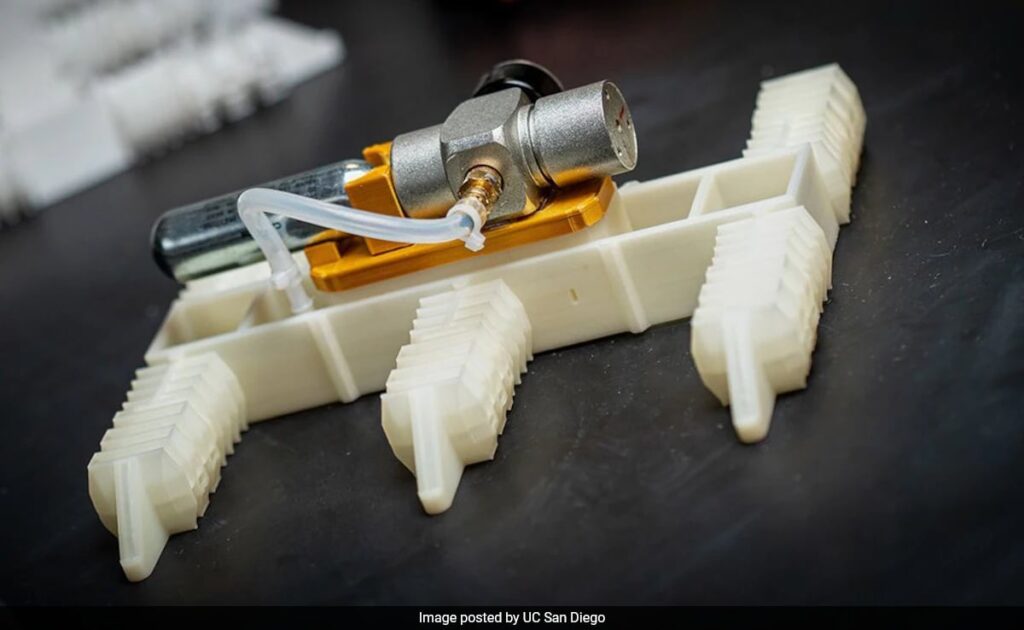UC San Diego’s Revolutionary Six-Legged Robot Could Change Robotics Forever
If you’ve ever imagined robots stepping off a 3D printer, ready to rock and roll, that dream is now a reality! Researchers at UC San Diego have unveiled a groundbreaking six-legged walking robot that shakes up conventional robotics by eliminating the need for complex electronics or assembly. Instead, this robot operates purely on compressed gas and can be 3D-printed in one seamless process from a single material. The best part? It can "walk right off the printer" with only the addition of a gas cartridge, making it a potential game-changer in the world of technology.
A New Way to Build Robots
The creative minds behind this innovation aimed to design robots that are both practical and economical, employing soft materials that give them flexibility. Traditional robots usually come with rigid structures, but this new approach uses simple, affordable 3D-printing filaments to construct the robots. Not only does this yield sturdy machines, but it also slashes production costs to approximately $20 per device—practical for labs, startups, and even aspiring inventors.
Michael Tolley, a professor in the UC San Diego Department of Mechanical and Aerospace Engineering, captures the essence of this innovation with, “This is a completely different way of looking at building machines.”
How Does This Marvelous Machine Work?
So, how do these robots manage to walk? The secret lies in a pneumatic oscillating circuit that emulates the mechanics of a steam engine. This circuit effectively manages the six legs’ movements by directing air pressure to alternate sets of legs, allowing for coordinated motion. Each leg boasts four degrees of freedom, enabling it to move vertically and horizontally, paving the way for straight-line walking.
Initial tests in the lab revealed that these robots could operate continuously for three days if connected to a constant gas or air supply. That’s some serious endurance!
Where Could These Robots Go?
The applications for these innovative robots are vast and varied. They’re particularly designed for environments where traditional electronic devices would struggle. Whether facing radiation-heavy disaster zones or embarking on missions in outer space, these robots are ready for action. During outdoor experiments, they demonstrated the ability to navigate diverse terrains, from grass to sand, and even underwater—all while being powered by a simple compressed gas cartridge.
Future Possibilities
As exciting as this breakthrough is, the researchers are already looking ahead at possible enhancements. Future developments might include:
- Integrating gas storage directly within the robot’s structure.
- Using recyclable or biodegradable materials to boost environmental sustainability.
- Adding manipulators, like grippers, to expand the robots’ functionality for various tasks.
With these advancements on the horizon, the possibilities are endless!
Conclusion
UC San Diego’s six-legged robot represents a significant leap in robotics, offering a unique and affordable solution for challenging environments. Its potential applications could quite literally go beyond anything we’ve imagined—think under the sea or way up in space!
The AI Buzz Hub team is excited to see where these breakthroughs take us. Want to stay in the loop on all things AI? Subscribe to our newsletter or share this article with your fellow enthusiasts.




